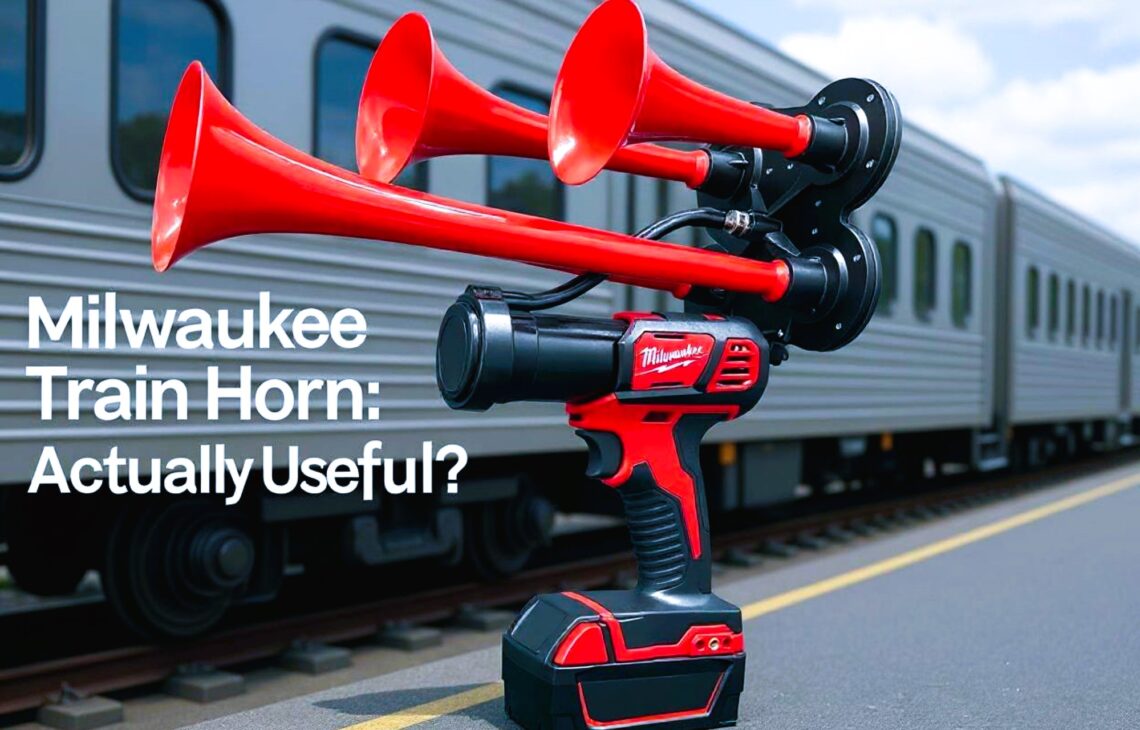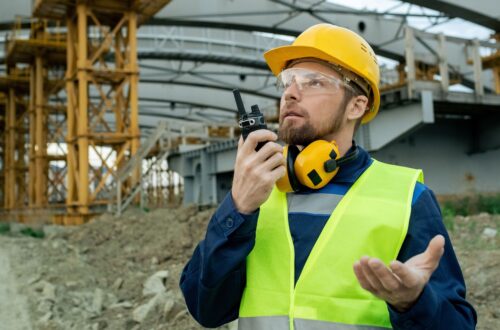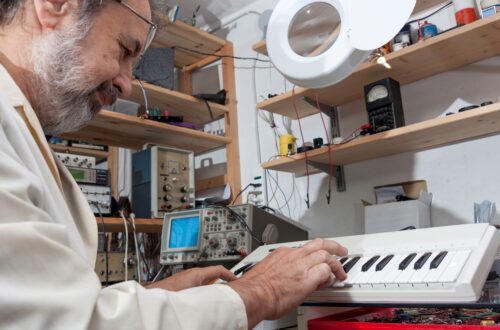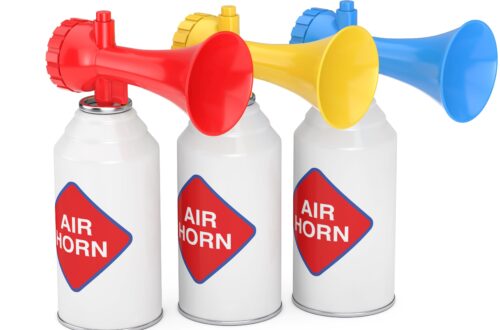
The Milwaukee Train Horn: Is It Just Loud, or Actually Useful?
Let’s get one thing straight: when someone slaps a Milwaukee Train Horn onto their ride, it’s not exactly subtle. But is the Milwaukee train horn all bark and no bite? Or does it actually serve a purpose beyond just making people jump out of their boots? You’d be surprised—this isn’t just a noise machine for show-offs.
Understanding the Beast: What Is a Milwaukee Train Horn?
Before we dive into its uses, it’s important to understand exactly what the Milwaukee Train Horn is. This isn’t some cheap novelty gadget or a simple car horn you find at your local auto parts store. The Milwaukee Train Horn is a serious piece of equipment designed to replicate the sound of a real train horn. It’s built to industrial standards, made from heavy-duty materials that can withstand harsh conditions and constant use. This horn is typically powered by an air compressor system that supplies pressurized air to produce its signature blaring sound.
The design of the Milwaukee Train Horn aims to mimic the volume and tone of genuine locomotive horns used by trains across the country. This means it doesn’t just produce a random loud noise; it creates a specific, deep, and resonant blast that can carry over long distances. The sound is engineered to cut through environmental noise like traffic, wind, and even storms, making it highly effective for safety and signaling purposes. Unlike regular vehicle horns, which can be sharp or shrill, the Milwaukee Train Horn’s tone is robust and commanding.
What really sets this horn apart is its sheer loudness. We’re talking about a noise level that can easily exceed 130 decibels, which is roughly equivalent to standing near a jet engine or a rock concert. It’s not just loud in the way a typical car horn is loud; it’s the kind of volume that can literally shake the ground beneath you and cause objects nearby to rattle. If you’re within earshot, it’s hard to ignore — it’s the kind of sound that grabs attention instantly, whether you want it to or not.
Because of this power, the Milwaukee Train Horn isn’t just a fun accessory; it’s a functional tool. It’s designed to provide clear, unmistakable warnings in situations where a normal horn might be drowned out. Whether it’s alerting pedestrians, other vehicles, or workers in noisy environments, this horn’s design and volume make it uniquely suited for serious signaling and safety. In short, the Milwaukee Train Horn is a beast — powerful, loud, and built for a purpose far beyond just turning heads.
The Obvious: Yes, It’s Incredibly Loud
You’re not imagining things when you hear about the Milwaukee Train Horn’s volume. This horn blasts out sound levels far beyond what your typical car horn produces. Depending on the specific model, Milwaukee train horns can reach anywhere from 130 to 150 decibels. To put that into perspective, standing near this horn when it’s sounding is like standing next to a roaring jet engine — it’s shockingly loud and impossible to ignore. Here’s a detailed look at how the Milwaukee Train Horn’s volume compares to other common sounds:
- A normal conversation usually registers around 60 decibels, which is comfortable and easy on the ears.
- The sound of a lawnmower running is about 90 decibels, already noticeably loud but still manageable.
- Rock concerts hit around 120 decibels, often requiring ear protection for prolonged exposure.
- The Milwaukee Train Horn, blasting at 130 to 150 decibels, is even louder than a rock concert and can cause physical vibrations nearby.
- For further context, a jet engine measured from 100 feet away registers about 140 decibels, putting the train horn right in that extreme noise category.
Safety First: Why Loud Isn’t Always a Bad Thing
| Situation Type | Environment | Why Loud Matters | Typical Users | Key Benefit |
| Off-road Adventures | Forest trails, mountains | Cuts through natural noise, alerts hikers or other vehicles on narrow paths | Off-road enthusiasts, ATV riders | Prevents collisions, improves communication |
| Agricultural Sites | Farms, fields | Alerts workers and animals over wide, noisy areas | Farmers, ranchers | Enhances safety, avoids accidents |
| Construction Zones | Building sites, roadworks | Warns crews of approaching vehicles or hazards | Construction workers | Reduces risk of injury, keeps teams aware |
| Emergency Situations | Roads, highways | Provides instant, unmistakable alert to pedestrians and traffic | Emergency responders, truck drivers | Improves reaction time, prevents accidents |
| Low Visibility Conditions | Fog, heavy rain, snow | Cuts through poor visibility to warn others early | Drivers, transport operators | Enhances road safety and awareness |
Real Talk: Is It Legal?
When it comes to using a Milwaukee Train Horn on your vehicle, legality is a big question mark that can’t be ignored. While the horn’s powerful blast is impressive and useful in many situations, it can quickly become a problem if you don’t follow local laws. Most states in the U.S., as well as many countries around the world, have noise regulations designed to prevent excessive sound pollution, especially in residential and urban areas. Blasting a train horn in a quiet neighborhood early in the morning or late at night can easily land you in hot water with the authorities or upset your neighbors.
The legal landscape around air horns like the Milwaukee Train Horn varies quite a bit from place to place. Some states outright ban the use of these types of horns on private vehicles, classifying them as devices intended only for trains or emergency vehicles. Others allow their use but only under specific conditions—such as off-road environments or during vehicle shows and exhibitions. This means that while you might be able to enjoy the full power of your train horn in the wilderness or at a car meet, using it on public roads in many areas is either heavily restricted or illegal.
Noise ordinances also play a significant role in how and when you can use a train horn. These laws often limit the volume or time of day during which loud noises are permitted. In some cases, even if the horn is installed legally, repeatedly using it in a manner that disturbs the peace can lead to fines or other penalties. It’s important to understand that these rules apply regardless of whether you’re driving a private car, truck, or any other type of vehicle.
Because of this complicated patchwork of regulations, the best advice is to always check your local and state laws before installing or using a Milwaukee Train Horn. Ignorance won’t save you if a noise complaint turns into a citation. Knowing the rules can help you enjoy your horn responsibly without risking fines or community backlash. In the end, being loud is one thing—but being legal and respectful is what truly matters.
Who’s Actually Using These Horns?
You might assume that only truck enthusiasts or pranksters use the Milwaukee Train Horn to scare people, but that’s far from the whole story. There are plenty of practical and legitimate reasons why various groups rely on this powerful horn every day. Its loud, attention-grabbing blast isn’t just for show—it serves important safety and communication roles across different environments and industries. Here’s a detailed list of who’s actually using Milwaukee Train Horns and why:
- Truckers: Long-haul drivers use these horns on highways, especially when hauling wide or heavy loads. The horn helps alert other drivers and pedestrians to their presence, reducing the risk of accidents on busy roads and in tricky passing situations.
- Farmers and Ranchers: Large agricultural operations often rely on the horn to communicate across vast fields. It’s useful for alerting workers spread out over large distances or for scaring animals away from dangerous equipment or areas.
- Emergency Preppers and Responders: Some emergency preparedness enthusiasts install train horns as part of their signaling and alert systems. In a crisis, the horn can broadcast urgent warnings quickly across neighborhoods or properties, cutting through background noise better than typical sirens or alarms.
- Off-Roaders and 4×4 Enthusiasts: When navigating challenging terrain, being heard can be just as important as being seen. Off-road drivers use the horn to alert others on narrow trails, in dense forests, or across hills where visibility is limited.
- Construction and Industrial Workers: On noisy worksites, these horns serve as reliable audible signals to communicate between crews or warn about approaching vehicles and equipment, enhancing safety on site.
- Parade Vehicles and Custom Car Builders: Many people install Milwaukee Train Horns purely for the thrill and style factor. During parades, car shows, or special events, the horn adds a bold, attention-grabbing sound that turns heads and entertains crowds.
- Boat Owners and Marina Workers: In marine environments, loud horns are critical for navigation and signaling, especially in fog or crowded harbors. Some boaters choose Milwaukee Train Horns for their distinct tone and reliable loudness.
- Safety Patrol and Security Vehicles: Certain security or patrol vehicles use train horns to signal their approach in large facilities, gated communities, or campuses where loud alerts help maintain order and awareness.
The Installation Process: Easier Than You’d Think
| Component | Purpose | Installation Tips | Tools Required | Notes |
| The Horn Itself | The main sound-producing unit | Mount securely away from heat sources | Socket wrench, drill | Position where sound projects forward |
| Air Compressor & Air Tank | Supplies compressed air to power the horn | Mount on stable surface, connect air lines carefully | Screwdrivers, wrench | Ensure tank is properly secured to avoid vibrations |
| Hoses and Fittings | Connects compressor to the horn | Use correct size hoses and clamps | Pliers, hose clamps | Check for leaks after installation |
| Relay and Wiring Harness | Controls electrical power for compressor and horn | Follow wiring diagrams precisely | Wire strippers, electrical tape | Use fuses for safety |
| Mounting Brackets | Holds horn and components firmly in place | Secure tightly to prevent rattling | Drill, screws, wrench | Choose corrosion-resistant hardware |
DIY or Pay a Pro?
Installing a Milwaukee Train Horn is definitely not your typical car modification that you can breeze through on a lazy weekend. It involves working with compressed air systems and electrical wiring—both areas that require some technical know-how and attention to detail. If you’re comfortable with basic mechanical skills and have experience handling air compressors and wiring, doing it yourself can be a rewarding and cost-saving project. You get the satisfaction of customizing your vehicle with your own hands while learning more about how these powerful systems work.
However, if you’re not confident in your ability to properly install air lines, mount the compressor securely, or handle the electrical wiring safely, it’s smart to consider hiring a professional. A poor installation can lead to a host of problems, from leaks in the air system to electrical shorts that could damage your vehicle’s wiring or cause the horn to malfunction. These issues might not only cost you more money in repairs down the line but could also leave you without a functioning horn when you really need it.
Beyond the risk of technical problems, safety is a major concern. Air compressors and pressurized tanks need to be installed correctly to prevent accidents, and electrical work must be done with proper fusing and insulation to avoid fires or damage. Professionals have the experience, tools, and knowledge to ensure everything is set up according to industry standards, giving you peace of mind that your horn will perform reliably and safely every time.
Ultimately, the decision to DIY or pay a pro depends on your skill level, comfort with complex installations, and how much time and effort you want to invest. If you’re willing to learn and take your time, the DIY route can be satisfying and cost-effective. But if you want a hassle-free experience and guaranteed results, entrusting the job to a trained installer is often the best choice. It’s one of those cases where investing upfront in professional help can save you from headaches later on.




